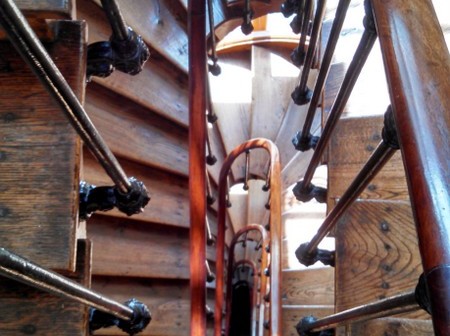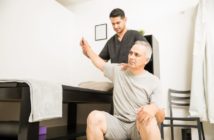Helpful Hints from a Physical Therapist
By Becky Williams PT
Editor’s Note: When you think about elder living and aging at home, it helps to have the support of an entire team: the family, the caregiver, and the health care professionals. When you have that with along with good communication, it’s golden. One of the most important team members to keeping everything literally moving along is the Physical Therapist. The following helpful hints are from a physical therapist that I have known, worked with and admired for years, Becky Williams PT. As always, run this and any health care advice by your own physician before trying. – Leslie Eckford
I’ve been a Physical Therapist for over 35 years, and have worked in a variety of settings. For the last 10 years, I’ve been seeing mostly geriatric clients in their homes—I’m a “private PT” which means that I am private pay only—no Medicare or insurance coverage. I see clients after Medicare stops paying, which can be a very short period if they don’t make regular progress. The benefit of private pay is that I don’t have to bend to Medicare’s rules of showing weekly progress. I’ve seen many clients 2x/week for up to 10 years! My goal is to keep them at home as long as possible by working on strengthening and balance, equipment needs, changes to their living environment for safety, and REALLY getting to know them and their families.
I saw a new client last week, and once again 2 very simple suggestions have made his life safer and better. He was having trouble getting up from his recliner, and his wife was trying to pull him up into a standing position. I taught him to scoot his hips forward to the edge of the chair, and then (this is the KEY) said “nose over toes” and instructed him to push from the armrests to stand—and up he popped with very little effort! His wife (and my client) was amazed, pleased, and relieved. That simple phrase “nose over toes” allows someone to get their weight over their feet without realizing it. It really does work! The other issue was steps. He was having difficulty going down the steps, and was going down backwards. This can be fine in some situations, but for him, it was dangerous because of the way the stairs were built. I had him use one rail and one forearm crutch, and instructed him to go down with the weak leg, one step at a time. The crutch/cane goes down first, then the weak leg, then the stronger one, repeat… This worked beautifully and he could SEE where he was going. And going up the stairs, he was trying to go up with his weak leg first, and it kept buckling, so once he started to go up with the strong leg first, he did much better. So if someone is having difficulty with stairs, remember this phrase: “up with the good, down with the bad” and ALWAYS use one rail and cane/crutch, or 2 rails if they are available. When he gets stronger, we will work on going step over step like he used to do.





